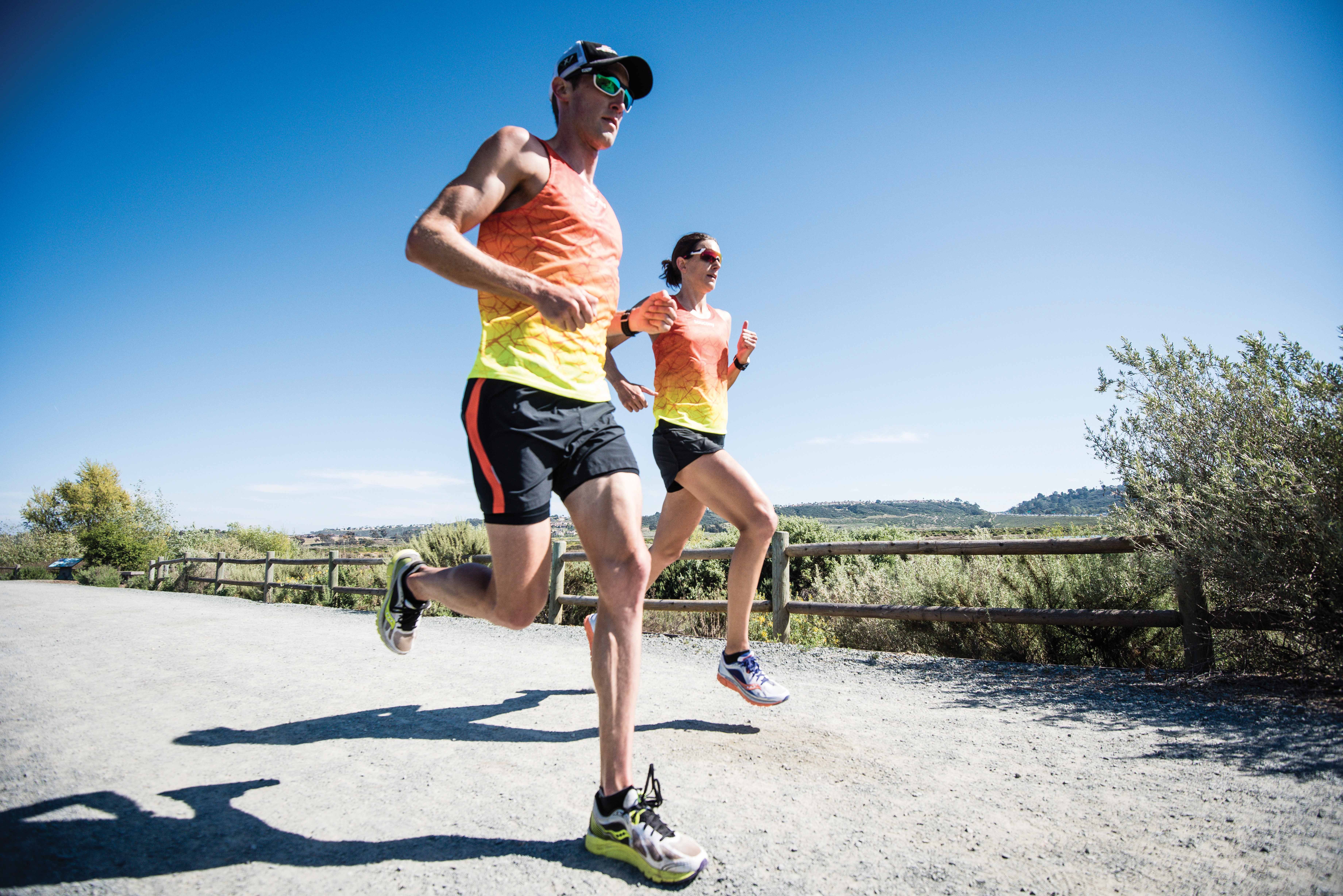Make The Most Of Your Long Runs

Trevor and Heather Wurtele run in San Diego. Photo: John David Becker
When it comes to triathlon training, “long run” is a relative term. If you’re preparing for an Olympic-distance race, your weekly long run is going to look very different from that of someone training for an Ironman. One thing the long run has in common across all distances, however, is the crucial role it plays in getting an athlete ready for competition.
“The long run is important for any distance, but especially for 10K events and up,” explains Marcelo Holcberg, a USA Triathlon-certified coach in Miami. “Doing it week after week, month after month, your endurance grows.”
There are many reasons behind including a long run in your training regimen. Perhaps most obviously, longer efforts at easier paces are designed to teach your body to be more efficient over the long haul. “It is one of the cornerstones of training,” says Mark Mico, an Albuquerque, N.M.-based coach. “The long run is used to train the body to convert fuels, train the aerobic system and teach mechanical efficiency.”
Long runs are also an opportunity to practice your mental focus leading up to a big race. Coaching yourself to stay positive at a given pace over many miles, even after fatigue sets in, can be a huge asset during an event.
No matter the distance for which you’re training, long run pace should remain fairly consistent. “Triathletes are so self-motivated, on long runs they often go too hard,” Mico says. “I suggest sticking to a conversational pace.” In heart rate terms, he translates this to 70–80 percent of an athlete’s max heart rate. He often assigns long runs in minutes, rather than miles, purely to keep an athlete from running too hard. With that said, if you can keep your pace under wraps, some athletes may prefer logging a specific number of miles.
Once you get your pace dialed, there’s a wide range of other things to pay attention to during your long runs. For instance, these types of workouts provide the ideal opportunity for you to practice your nutrition regimen. “You have to train your digestive system for race day,” adds Mico.
Long runs also present the chance to focus on form, particularly in the latter stages of the workout when fatigue sets in. “When you get tired during a long run, your form is the first thing to fail,” explains Holcberg. “When that happens, it can lead to injuries, so it is important to focus on running tall and leaning forward.”
“Relax your shoulders, shake out your hands, pay attention to quick turnover and a mid-foot strike,” adds Mico.
Since you’re juggling three disciplines, it can be tricky to determine how long your long run should be. Mico generally suggests increasing the long run by around 10 percent each week. If you’re new to the sport or are coming back after an extended period of downtime, you may want to increase it by slightly less until you gain fitness.
RELATED: How To Nail The Ironman Marathon
Long Run Targets
Going into training, many triathletes are interested in what their longest long runs will be once they get into the thick of training. Here are some general ranges based on race distance.
Sprint: 60–75 minutes
Olympic: 60–90 minutes
Half-Ironman: 1:30–2 hours
Ironman: 2:15–3 hours